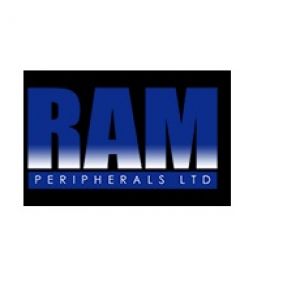CD Printing: Best Printing Method for Your ProjectPosted by RAM Peripherals Ltd on February 14th, 2018 Are you still using adhesive labels on your compact discs? You’d be glad to know that there are far safer and longer lasting techniques that can be used to create great-looking covers for your CDs and DVDs. It is now easier than ever to record music, burn movies, and store data on a CD, but burning a disc flawlessly is just half the battle. Labelling your creation and making it look professional can even be twice as much of a challenging task. Below are a variety of different printing methods you can use for your recordings and projects other than printing off and using sticky labels that affect disc balance and cause problems with the disc’s playability:
The industry standard for labelling and printing on high volumes of discs, lithographic printing is an innovative printing method involving the creation of what is known as printing plates. These printing plates can be made from photographic negatives, which are processed using a traditional photo production method where the negatives are bathed in chemicals. Images can likewise be processed directly from a computer to a plating machine in a procedure known as the CTP or computer to plate process. The plates are imposed onto rubber blanket cylinders within a specialised printing machine (thus the term offsetting, as plate imagery are offset onto the cylinders). The cylinders then apply the appropriate colours onto the disc’s printing side.
Silk screen printing uses the basic principle of traditional screen printing where ink is passed through a mesh or screen. The mesh is stretched on a frame together with an outline or stencil of the image to be printed. The open areas of the stencil allow the ink to flow through, leaving a nice, clean print on the disc. A four-color process, screen printing on CDs, much like screen printing on garments and fabrics is more suited for designs that use solid colours rather than those with colour gradients.
Inkjet printing is a cost-efficient option for those with low-volume printing requirements. The great thing about inkjet printing is that it can be used to produce a wide range of design styles, including solid colour and photographic images. This type of CD printing uses principles and technologies similar to home inkjet colour printers.
In thermal printing, images are sent directly from the computer to the print machinery. The print machine uses transfer ribbons that pass below a heated printing head, thus enabling ink transfer. Thermal printed outputs are waterproof and don’t require additional procedures to keep the print intact, unlike inkjet prints. Whichever type of printing method you choose to use, it pays to have a reliable source of supplies to make sure that you’ll never run out in the middle of a print batch. About The Company RAM Peripherals are the UK official partners of Rimage and an authorised Rimage Service Centre. We can supply all Rimage CD/DVD duplicators and disc publisher equipment range and repair / maintain your existing Rimage hardware. We are a Makerbot Authorised Reseller and a Stratasys UK Partner, authorised to sell products in their 3D Printing range. Like it? Share it!More by this author |


